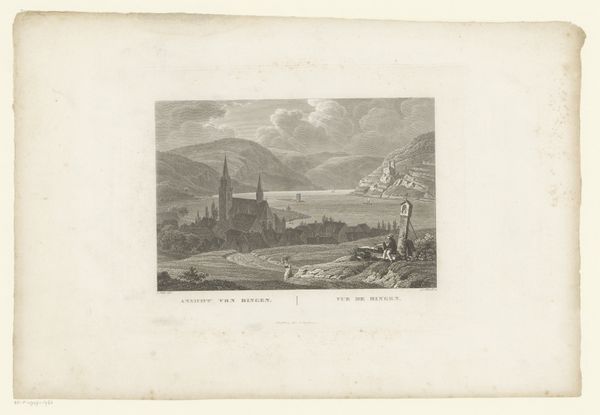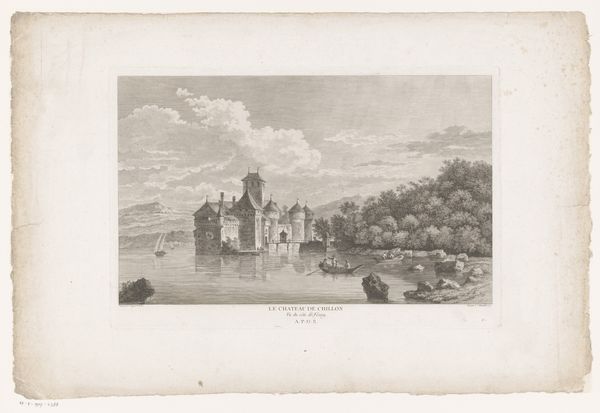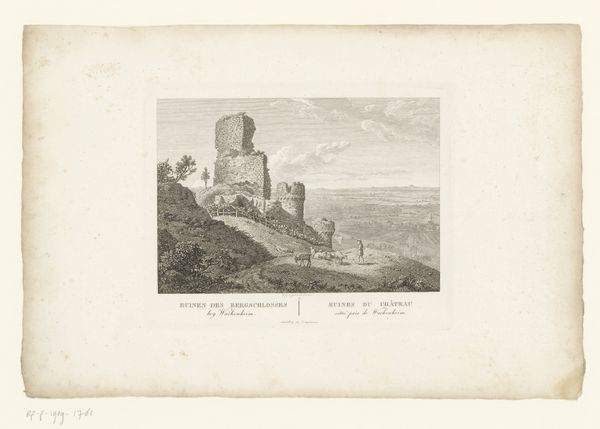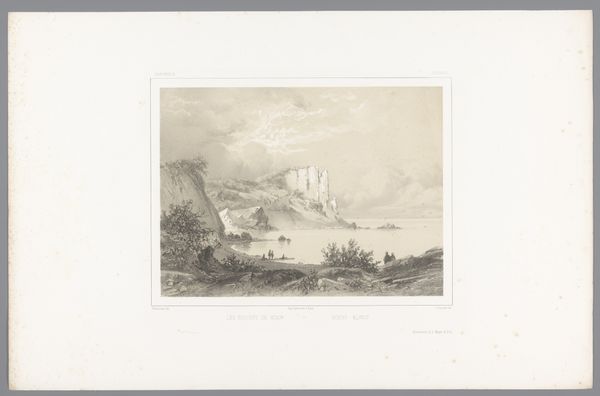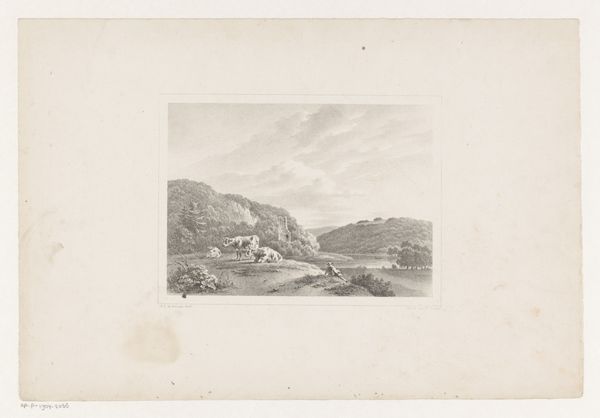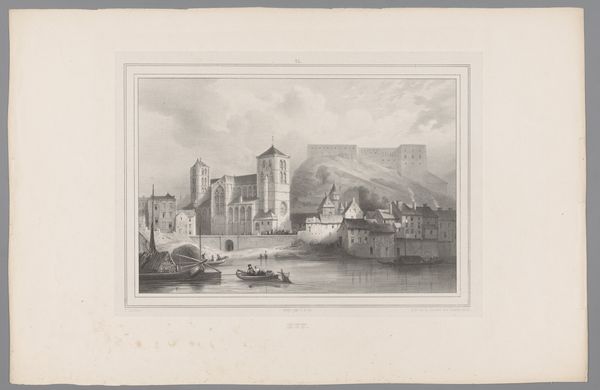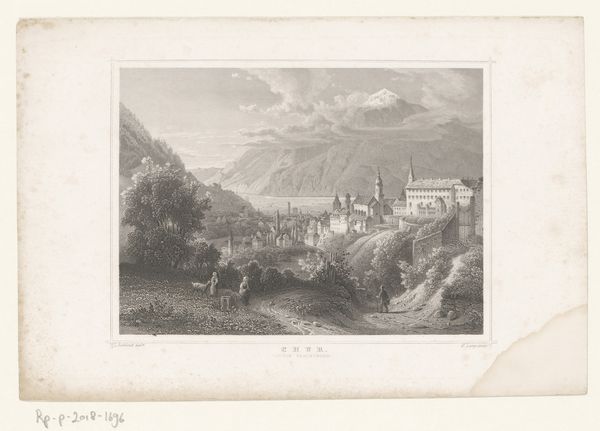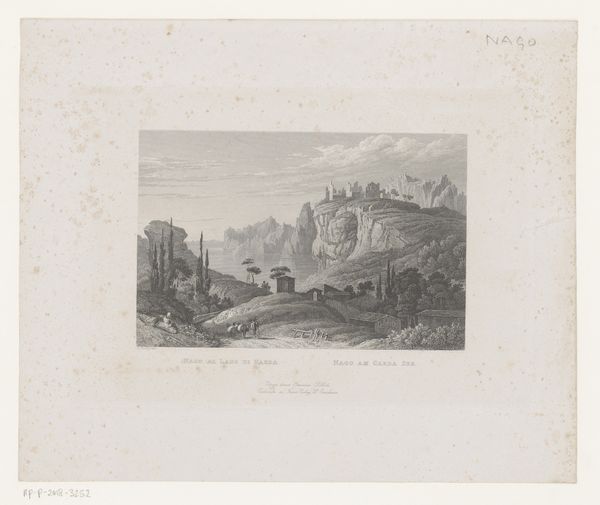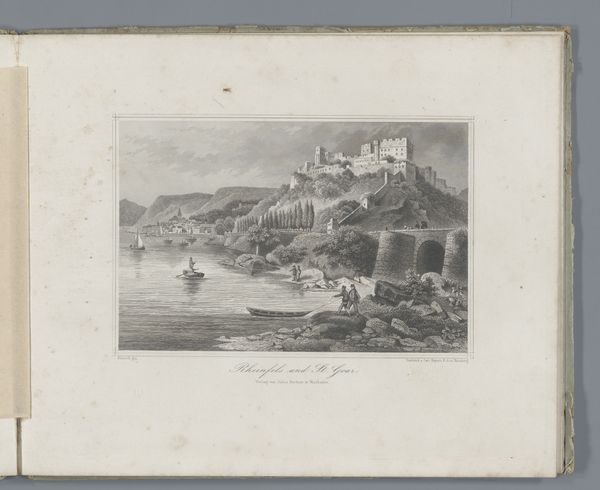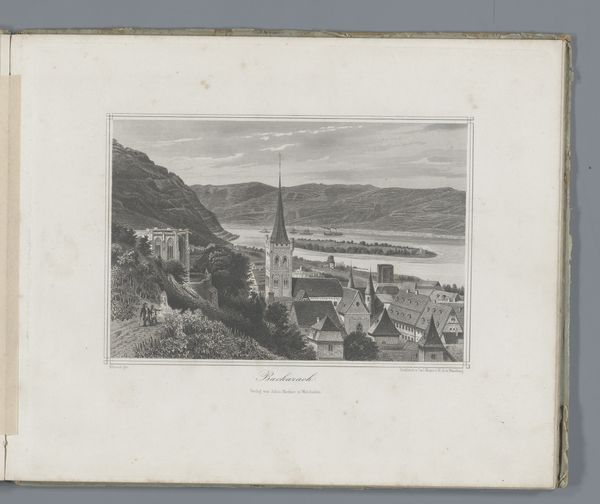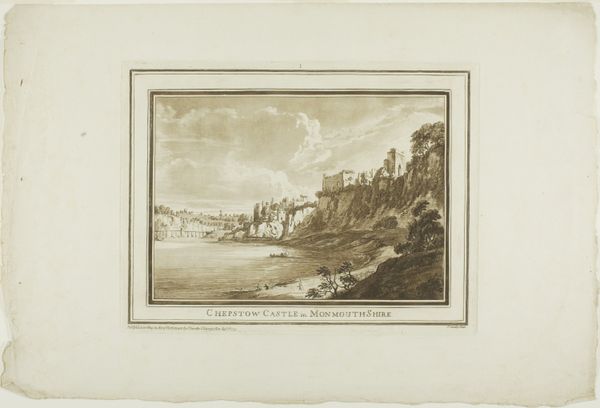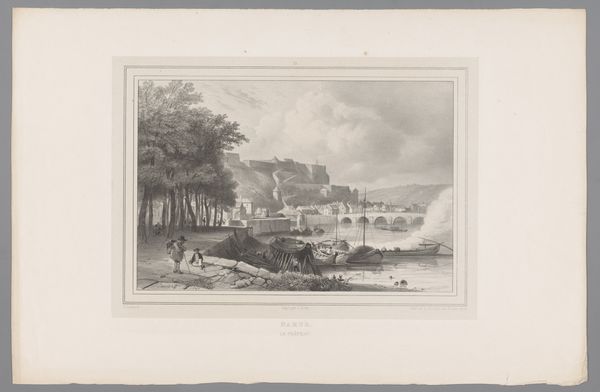
print, etching, engraving
# print
#
etching
#
landscape
#
romanticism
#
cityscape
#
engraving
Dimensions: height 204 mm, width 262 mm
Copyright: Rijks Museum: Open Domain
Editor: So, here we have "Gezicht op Rüdesheim am Rhein," an etching and engraving by Ludwig Friedrich Schnell, created sometime between 1800 and 1834. I find its romantic, almost storybook-like depiction of the town quite charming. What really strikes me is how the architectural elements sort of dominate the scene, but nature still has its own quiet presence. What do you see in this piece, especially considering its historical context? Curator: That's a keen observation about the balance between architecture and nature. Considering this work through a historical lens, I see a deliberate construction of national identity. Rüdesheim, with its medieval architecture, wasn't just being represented; it was being packaged for public consumption. Prints like these circulated widely. Do you think that maybe that's a means of cultivating a sense of German heritage during a period of significant political change? Editor: That's a fascinating point. It's easy to get caught up in the picturesque scene and miss the possible socio-political undertones. Was the aim of popularizing prints such as these purely nationalistic, or did economic factors also play a part in this? Curator: Excellent question. Absolutely, it's not a binary choice. Tourism was growing. Such imagery created a desire to experience these "historic" places. Prints fueled that desire and served as mementos. Furthermore, art institutions helped create art markets for works like this. This allowed not just nationalistic desires to manifest, but economic ones. Do you agree that the romantic era often blends patriotism and commerce? Editor: Yes, that's a useful point to note, creating a blend of cultural pride and economic opportunity! Thinking about how art is intertwined with power structures offers so much to consider. Thanks! Curator: It’s crucial to see art as a cultural product, shaped by institutions and consumed by the public. I'm glad we were able to make sense of this print as being an agent of the growing tourism and political change within Germany during the early 19th century.
Comments
No comments
Be the first to comment and join the conversation on the ultimate creative platform.
